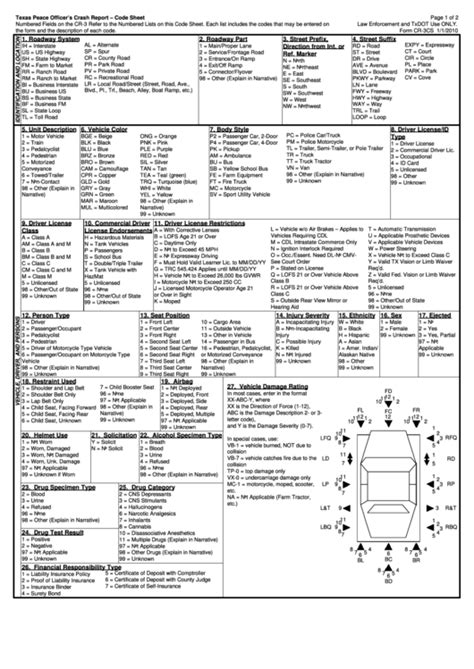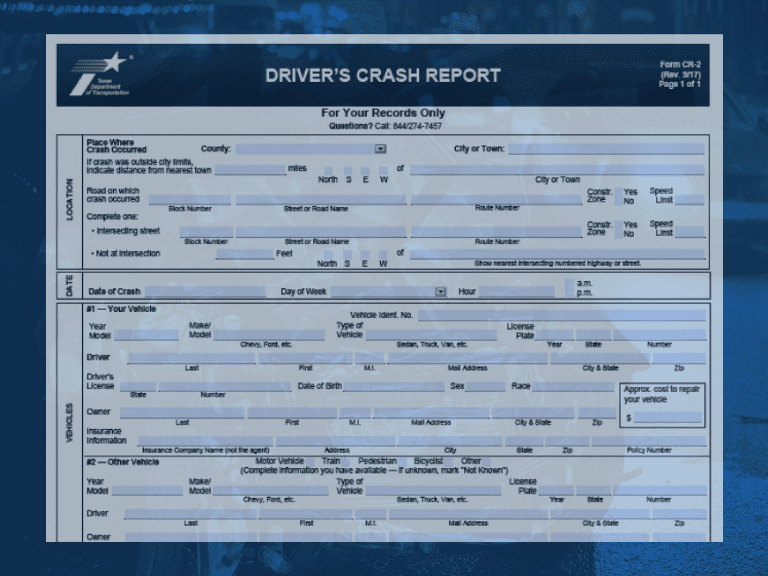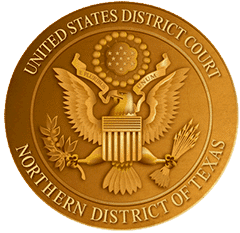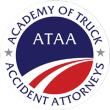Are you struggling to understand the complex jargon and confusing details in a Texas car accident report? Fret not, for this comprehensive guide is here to unravel the mysteries and provide you with a clear understanding of what that document really means.
Reading a car accident report can be overwhelming, especially if you’re not familiar with the terminology and codes used by law enforcement. But with this guide in hand, you’ll be able to decipher the report like a pro.
Within these pages, we’ll break down the various sections of a Texas car accident report and explain the information they contain. From the officers’ initial observations to the diagrams and photographs of the scene, we’ll help you navigate through every detail.
Not only will you learn how to interpret the report, but you’ll also gain valuable insights into how it can affect your insurance claim, personal injury case, or any legal proceedings that may arise from the accident.
Don’t let the complexity of a Texas car accident report overwhelm you. Let this guide be your trusted companion as you navigate the confusing world of accident reports and gain clarity on what really happened.
Understanding the Different Sections of a Car Accident Report
When reading a Texas car accident report, it’s important to understand that it is divided into several sections, each containing specific information about the incident. By familiarizing yourself with these sections, you’ll be better equipped to interpret the report accurately.
The first section of a car accident report typically includes basic details such as the date, time, and location of the accident. It also lists the names and contact information of the parties involved, including drivers, passengers, and witnesses. Additionally, this section may provide information about the vehicles involved, including their make, model, and license plate numbers.
The next section of the report usually contains a narrative description of the accident. This narrative is a summary of the events leading up to the collision and may include details about weather conditions, road conditions, and any contributing factors such as speeding or distracted driving. It’s important to carefully review this section, as it provides crucial information about the circumstances surrounding the accident.
Another important section of the car accident report is the officer’s observations and conclusions. This section includes the responding officer’s assessment of the accident, including any violations of traffic laws or regulations. It may also include statements from the parties involved, as well as any witnesses. Understanding the officer’s observations and conclusions can help you determine who may be at fault for the accident.
Key Information to Look for in a Car Accident Report
When reading a car accident report, it’s essential to pay attention to key information that can significantly impact the outcome of your insurance claim or legal proceedings. By identifying and understanding this information, you’ll be better prepared to navigate the aftermath of the accident.
One crucial piece of information to look for is the determination of fault. In many car accident reports, the officer will indicate who they believe is at fault for the collision. This determination can have a significant impact on your insurance claim and any legal actions you may pursue. It’s important to carefully review this section and ensure that the officer’s assessment aligns with your understanding of the accident.
Another important detail to consider is the description of injuries sustained by the parties involved. This section will outline the injuries reported at the scene, which can be crucial when filing a personal injury claim. It’s important to note that not all injuries may be immediately apparent, so it’s essential to seek medical attention and document any delayed symptoms.
Additionally, be sure to review the details of any citations or violations listed in the report. This information can be used to support your case if you believe the other party was negligent or violated traffic laws. It’s crucial to gather evidence and documentation to strengthen your position and ensure a fair resolution.
How to Interpret the Diagram Section of a Car Accident Report
One of the most critical sections of a Texas car accident report is the diagram section. This section visually represents the scene of the accident and provides a detailed illustration of the vehicles involved, their positions, and any relevant traffic signs or signals. Understanding how to interpret this diagram can be instrumental in determining fault and understanding the sequence of events.
When reviewing the diagram, start by identifying the key elements, such as the vehicles involved and their respective positions at the time of the collision. Pay attention to arrows or labels that indicate the direction of travel. This information can help you understand how the accident occurred and whether any parties may have violated traffic laws.
Additionally, the diagram may include symbols or notations that represent important details, such as skid marks, debris, or points of impact. These symbols can provide valuable insights into the dynamics of the accident and help you reconstruct what happened.
It’s also crucial to carefully review the scale and measurements included in the diagram. This information can help determine the distance between vehicles, the location of impact, and other relevant measurements that may be necessary for your insurance claim or legal proceedings.

Analyzing the Narrative Section of a Car Accident Report
The narrative section of a car accident report is where the investigating officer provides a detailed account of what transpired. This section plays a crucial role in understanding the sequence of events and assigning fault.
- Introduction to the narrative section
The narrative section typically begins with a brief summary of the accident, including the date, time, and location. It may also mention the weather conditions at the time of the incident. This introductory paragraph sets the stage for the detailed account that follows.
- Describing the parties involved
The officer will then describe the parties involved in the accident, including their names, contact information, and any identifying characteristics such as age or gender. This information is important for insurance purposes and can help establish liability.
- Chronological order of events
The main body of the narrative section will outline the events leading up to the accident, as well as what occurred afterward. The officer will describe the actions of each party involved, their positions on the road, and any traffic violations or contributing factors that may have played a role in the collision.
It is crucial to carefully read and analyze this section, as it forms the basis for determining fault and liability. Look for any inconsistencies or discrepancies that may impact your insurance claim or legal proceedings. Understanding the narrative section is key to unraveling the mysteries of a car accident report.
Identifying Contributing Factors in a Car Accident Report
One of the most important aspects of a car accident report is identifying the contributing factors that led to the collision. These factors can help determine fault, establish liability, and provide insight into what caused the accident to occur.
- Weather conditions
Weather conditions play a significant role in car accidents, and the report will often mention the prevailing conditions at the time of the incident. Factors such as rain, fog, or icy roads can impact visibility and control, increasing the likelihood of a collision.
- Road conditions
The state of the road surface and any hazards present can contribute to accidents. The report may mention if the road was wet, uneven, or if there were any obstructions that could have played a role in the collision.
- Traffic violations
The report will outline any traffic violations committed by the parties involved, such as speeding, running a red light, or failure to yield. These violations can help establish negligence and determine who is at fault.
- Driver behavior and impairment
The investigating officer may make note of any observations regarding driver behavior or impairment. This can include signs of intoxication, distracted driving, or reckless behavior. Such information is crucial for establishing liability and determining if criminal charges are warranted.
Analyzing the contributing factors mentioned in the car accident report can give you a better understanding of what caused the collision and who may be at fault. This information will be valuable when dealing with insurance companies, pursuing a personal injury claim, or navigating any legal proceedings that arise from the accident.
Common Abbreviations and Terminology in Car Accident Reports
Reading a car accident report can sometimes feel like deciphering a secret code, with numerous abbreviations and terminology used throughout. Understanding these codes and terms is essential for accurately interpreting the report.
- Vehicle abbreviations
The report may use abbreviations to refer to different types of vehicles involved in the accident. Some common abbreviations include “PK” for pickup truck, “SUV” for sport utility vehicle, and “MC” for motorcycle. Familiarizing yourself with these abbreviations will make it easier to understand the report’s descriptions.
- Collision types
The report may use specific terms to describe the type of collision that occurred. Examples include “rear-end,” “side-swipe,” or “head-on” collision. These terms help paint a clearer picture of how the accident unfolded.
- Vehicle directions
Understanding the abbreviations for vehicle directions is crucial for visualizing the accident scene. Abbreviations such as “N” for north, “S” for south, “E” for east, and “W” for west are commonly used. These abbreviations help determine the positions and movements of the vehicles involved.
- Contributing factors
The report may include codes or abbreviations to indicate contributing factors that played a role in the accident. These can include “DWI” for driving while intoxicated, “D” for distracted driving, or “F” for failure to yield. Knowing these codes will help you understand the causes and potential liability involved.
By familiarizing yourself with the common abbreviations and terminology used in car accident reports, you can confidently navigate through the document and gain a deeper understanding of the details. This knowledge will empower you when dealing with insurance claims, personal injury cases, or any legal proceedings related to the accident.
Get Your FREE Texas Accident Report
100% FREE.
No Payment Necessary.
How to obtain a copy of a car accident report in Texas
Obtaining a copy of a car accident report in Texas is an essential first step in understanding the details of an accident. This report serves as an official record of the incident and contains crucial information that can aid in insurance claims and legal proceedings. Fortunately, obtaining a copy of the report is relatively straightforward.
To obtain a car accident report in Texas, you typically need to contact the law enforcement agency that responded to the accident. This is usually the local police department if the accident occurred within city limits or the county sheriff’s office if it happened in an unincorporated area. The Texas Department of Transportation may also have accident reports available for accidents on state highways. You can usually find contact information for the relevant agency online or by calling their non-emergency phone number.
When requesting a copy of the report, you will need to provide certain details about the accident, such as the date, time, and location. Some agencies may also require the names of the parties involved or the accident report number, if available. Depending on the agency, you may be able to request the report in person, by mail, or online. Some agencies may charge a small fee for providing a copy of the report.
Once you have obtained the car accident report, take the time to read through it carefully. Familiarize yourself with the different sections and the information they contain. This will help you gain a better understanding of what happened during the accident and how it may impact any insurance claims or legal actions you might pursue.
How to use a car accident report to support an insurance claim or legal case
A car accident report can be a valuable tool in supporting an insurance claim or legal case resulting from the accident. Understanding how to use the information contained within the report is crucial in presenting a strong case. Here are some key ways to utilize a car accident report to your advantage:
- Establishing fault: One of the primary purposes of a car accident report is to determine who is at fault for the accident. The report will typically include the investigating officer’s assessment of the cause of the accident, based on the evidence and statements provided. This assessment can serve as crucial evidence in proving fault, especially when it aligns with your version of events.
- Gathering witness statements: Car accident reports often include statements from witnesses who saw the accident occur. These statements can be powerful evidence in supporting your claim, especially if they corroborate your account of the events. Make sure to carefully review the witness statements in the report and identify any potential witnesses you may want to contact for further information or testimony.
- Documenting injuries and damages: Car accident reports typically include details about injuries sustained by the parties involved and the extent of property damage. This information is essential when filing an insurance claim or seeking compensation for medical expenses, vehicle repairs, and other damages. Ensure that the report accurately reflects the injuries and damages you suffered by carefully reviewing this section.
- Preserving evidence: In addition to written descriptions, car accident reports often include diagrams and photographs of the accident scene. These visual representations can be invaluable in recreating the accident and demonstrating important details, such as road conditions or the position of vehicles at the time of impact. Use these diagrams and photographs to your advantage when presenting your case.
By utilizing the information and evidence contained within a car accident report, you can strengthen your insurance claim or legal case. Remember to consult with an attorney or insurance professional who can guide you through the process and help you make the most of the report’s contents.
Conclusion: The importance of understanding car accident reports in Texas
Understanding car accident reports in Texas is crucial for anyone involved in an accident. These reports contain vital information that can impact insurance claims, personal injury cases, and other legal proceedings. By familiarizing yourself with the various sections of a car accident report, you can decipher the information contained within and use it to your advantage.
Obtaining a copy of a car accident report in Texas is the first step in this process. By contacting the appropriate law enforcement agency and providing the necessary details, you can acquire the official record of the accident. Once you have the report in hand, take the time to carefully review its contents, paying attention to sections such as the investigating officer’s assessment of fault, witness statements, and details about injuries and damages.
Using the information and evidence contained in a car accident report, you can support your insurance claim or legal case. The report can help establish fault, gather witness statements, document injuries and damages, and preserve crucial evidence through diagrams and photographs. By understanding and utilizing the report effectively, you can navigate the complex world of car accident claims with confidence.
In conclusion, don’t let the complexities of a Texas car accident report intimidate you. With the help of this comprehensive guide, you now have the tools to decode the mysteries hidden within the report. Empower yourself with knowledge and understanding, for it will be your greatest asset in the aftermath of a car accident.





























